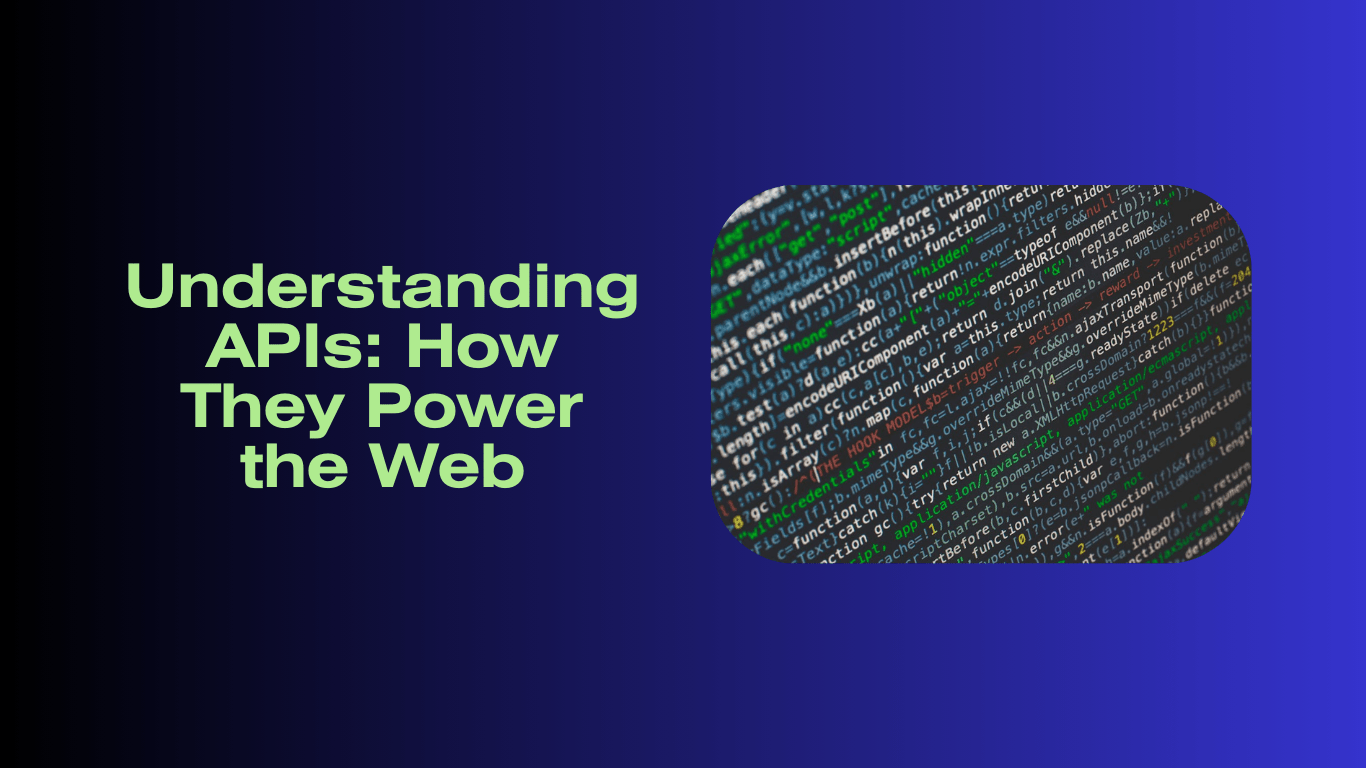Understanding APIs: How They Power the Web

Understanding APIs: How They Power the Web
APIs, or Application Programming Interfaces, are essential for modern web development, enabling seamless communication between software applications. They are the backbone of the connected world, allowing systems to share data and functionality efficiently. Here’s a deep dive into APIs, how they work, and why they’re vital for powering the web.
What Is an API?
An API is a set of rules and protocols that allow one software application to interact with another. Think of it as a messenger that delivers a request from one application to another and returns the response.
- Analogy: Imagine an API as a waiter in a restaurant. You (the user) tell the waiter (API) what you want from the kitchen (server), and the waiter delivers it back to you once it’s ready.
How APIs Work
- Request:
A client sends a request to the API, specifying the data or action it needs. This is often done via HTTP methods such as:- GET: Retrieve data.
- POST: Send data to create something.
- PUT: Update existing data.
- DELETE: Remove data.
- Processing:
The API interacts with the server or database to process the request. - Response:
The API sends back the requested data or a confirmation of the action taken, usually in a format like JSON or XML.
Types of APIs
- Web APIs:
Enable communication between web-based systems using HTTP protocols. Examples include RESTful APIs and GraphQL APIs. - Open APIs (Public APIs):
Accessible to developers and the public. Examples: Google Maps API, Twitter API. - Internal APIs:
Used within an organization to streamline operations between internal systems. - Partner APIs:
Shared with specific business partners, often with restricted access. - Composite APIs:
Combine multiple API calls into one to simplify complex processes.
Key API Concepts
- REST (Representational State Transfer):
A widely used architecture style for APIs that relies on stateless communication and standard HTTP methods. - GraphQL:
A query language for APIs that allows clients to request specific data, reducing over-fetching and under-fetching of data. - SOAP (Simple Object Access Protocol):
A protocol for exchanging structured information, often used in enterprise environments. - Endpoints:
Specific URLs where APIs can be accessed to perform tasks (e.g.,/users,/products). - Authentication and Security:
APIs use tokens, keys, or OAuth to ensure secure access and data privacy.
Why APIs Are Essential
- Integration:
APIs allow different systems to work together, creating interconnected ecosystems. Example: A weather app pulling data from a weather API. - Efficiency:
Developers can use APIs to access pre-built functionality rather than building features from scratch. Example: Payment processing with Stripe API. - Scalability:
APIs enable modular development, allowing features to be added or updated independently. - Innovation:
APIs foster innovation by giving developers access to powerful tools and data. Example: Machine learning models through APIs like OpenAI. - User Experience:
Seamless integrations powered by APIs enhance user experiences. Example: Social media login buttons use APIs to authenticate users.
Real-World API Examples
- Social Media Integration:
- Facebook Graph API: Allows applications to fetch user profiles, posts, or photos.
- Twitter API: Enables developers to fetch tweets, post updates, and analyze trends.
- E-commerce:
- PayPal API: Handles secure payment transactions.
- Shopify API: Lets developers integrate inventory, orders, and customer data.
- Mapping and Navigation:
- Google Maps API: Powers location-based services in apps like Uber and Airbnb.
- Data and Analytics:
- Google Analytics API: Fetches website performance metrics.
Challenges and Considerations
- Rate Limits:
APIs often limit the number of requests a client can make within a given timeframe. - Latency:
Slow APIs can affect application performance, especially in real-time scenarios. - Security Risks:
Improperly secured APIs can expose sensitive data. It’s essential to use secure protocols, validate inputs, and implement rate limiting. - Documentation:
Comprehensive API documentation is critical for developer adoption and usability.
The Future of APIs
- API-First Development:
More organizations are designing systems with APIs as the core building blocks, making integration simpler and more flexible. - Microservices Architecture:
APIs play a crucial role in enabling microservices, where applications are broken down into modular, independently deployable services. - Automation and AI:
APIs will continue to drive advancements in automation, AI, and machine learning, connecting intelligent systems seamlessly. - Standardization:
The adoption of standards like OpenAPI Specification (OAS) will make API design and usage more consistent.
Conclusion
APIs are the lifeline of modern web applications, connecting disparate systems and enabling innovative functionality. Whether you’re integrating third-party services, building scalable architectures, or enhancing user experiences, understanding and leveraging APIs is crucial for success in today’s digital ecosystem.